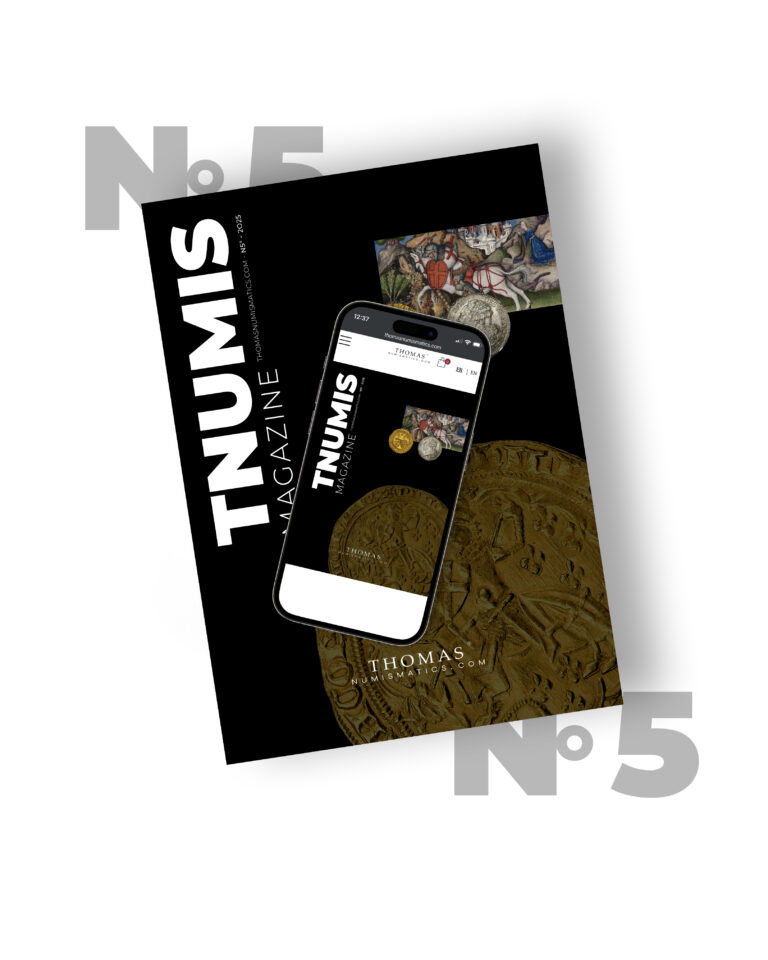
Discover all the news and articles from TNUMIS Magazine exclusively
The 1933 twenty-dollar coin
Twenty-dollar coins were minted in the United States for almost a century, between 1907 and 1933. These gold coins have a special place in American numismatics, and tell the story of a nation. We’ll take a look at the essence of these emblematic coins, before focusing on one of them, arguably the rarest American coin: the 1933 $20.
Background and history of the $20 coin
A gold coin
Production of the $20 gold coin began with the gold rush, when deposits of the precious metal were discovered in California in 1848. With the massive arrival of gold on the market, silver coins disappeared and the American government decided to create this new gold coin.
Synonyms: Double Eagle and Liberty
The $20 coin contains the two national emblems: the allegory of liberty and the eagle.
This is nothing new. In 1792, the passage of the Mint Act decreed the American dollar as the country’s standard currency. The obverse featured an allegory of liberty with the year of minting, while the reverse featured an eagle. Gold $5 and $10 coins were minted from 1795 onwards.
It wasn’t until 100 years later, therefore, that the $20 coin saw the light of day with these same American symbols. It derives its various numismatic identities from them, sometimes taking the name Liberty or Double Eagle. Double was added to compare with the traditional American Eagle, the reference 10-dollar coin.
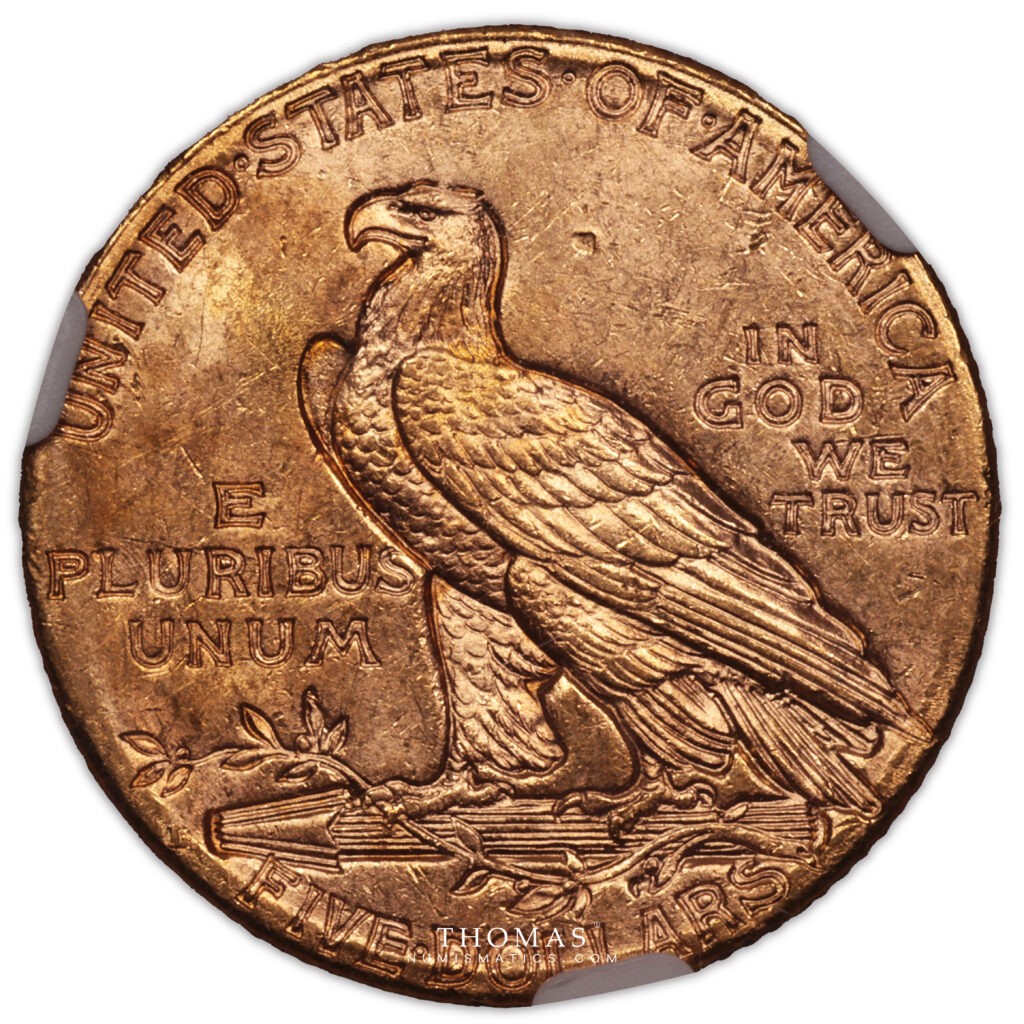
Its features
The $20 coin was therefore issued between 1849 and 1933. However, two versions can be distinguished:
- The $20 coin was therefore issued between 1849 and 1933. However,
- the $20 Saint-Gaudens coin, minted from 1907 to 1933.
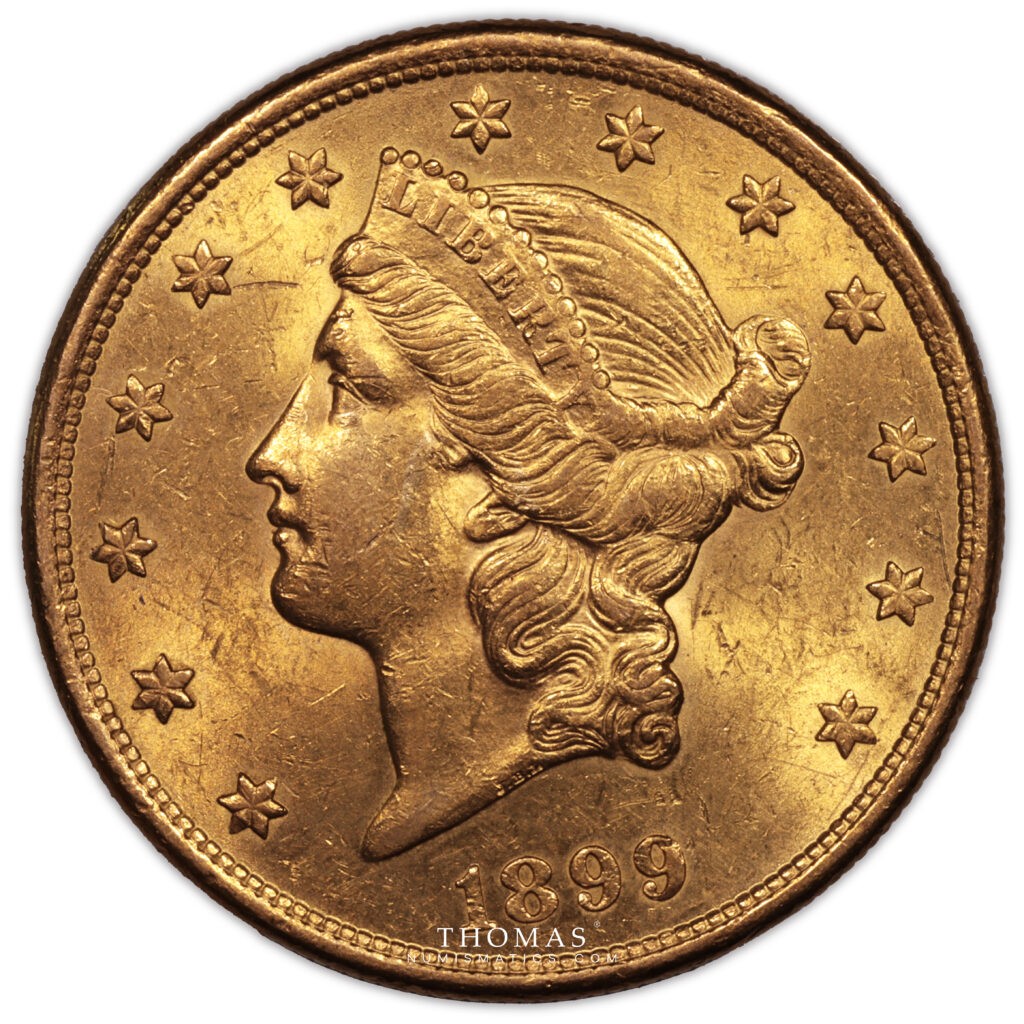
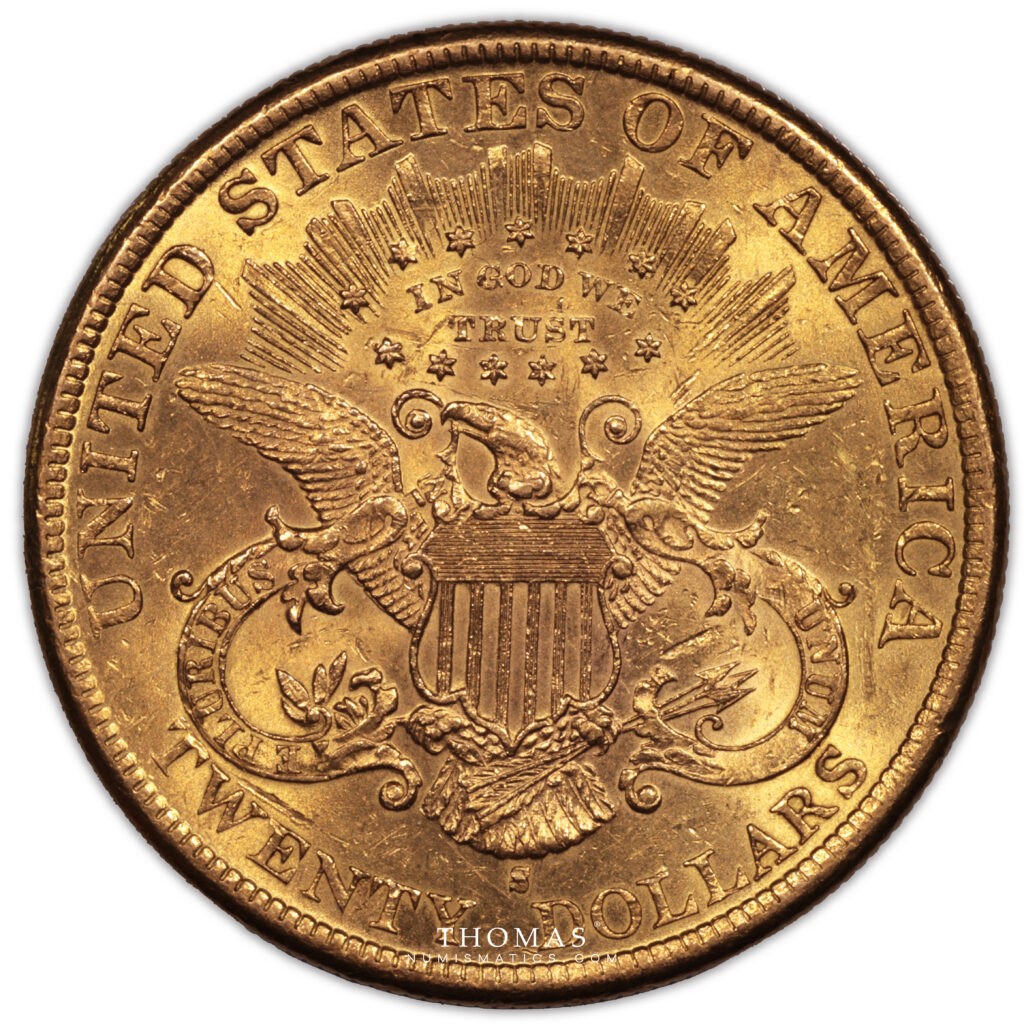
Regardless of model or year, the characteristics of the $20 coin remain constant. Composed of 30.09 g of pure gold, it is made up of 90% gold and 10% copper alloys. Gold being highly malleable, it is combined with a harder metal to reinforce its resistance during circulation. With a total weight of 33.436 grams, it is the largest American gold coin ever circulated in the United States.
The 1933 20 dollars coin
What makes Saint-Gaudens so special
The $20 coin, minted from 1907 to 1933, was designed by the Franco-Irish sculptor Augustus Saint-Gaudens, on the orders of President Theodore Roosevelt, who wanted to modernize the Longacre motif.
On the obverse of the coin, Liberty is no longer a simple portrait in profile, but is now standing on a rock, dynamic and on the move. She strides forward against a backdrop of the rising sun, with the Capitol in the background. She is dressed in antique-style peplos, holding a torch in her right hand and an olive branch in her left.
Above, the word LIBERTY is inscribed. Surrounding the woman, 46 5-pointed stars represent the American states. To her right, the date of issue and the signature of the ASG engraver.
On the reverse, the eagle comes to life. He too is in flight, carried by the sun’s rays. At the top, it reads “UNITED STATES OF AMERICA – TWENTY DOLLARS”, and below, the motto “IN GOD WE TRUST”.
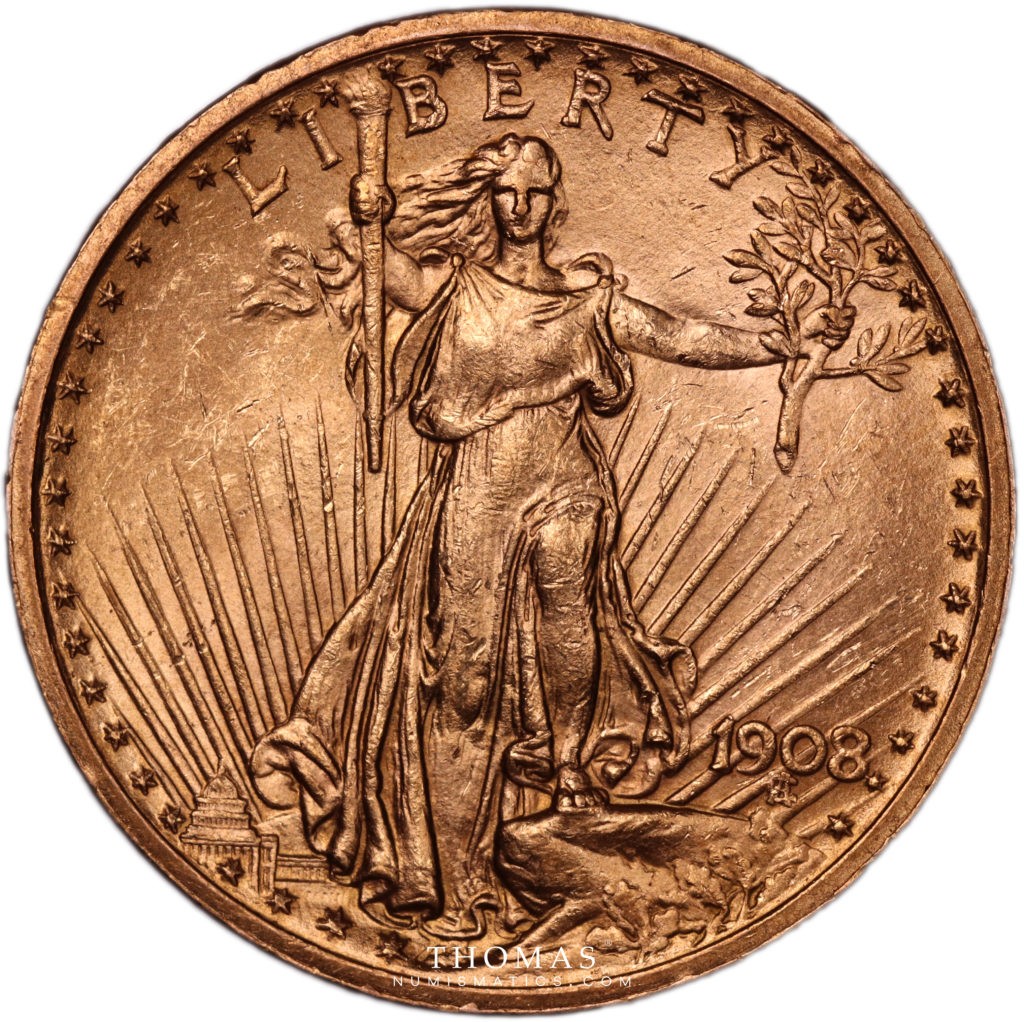
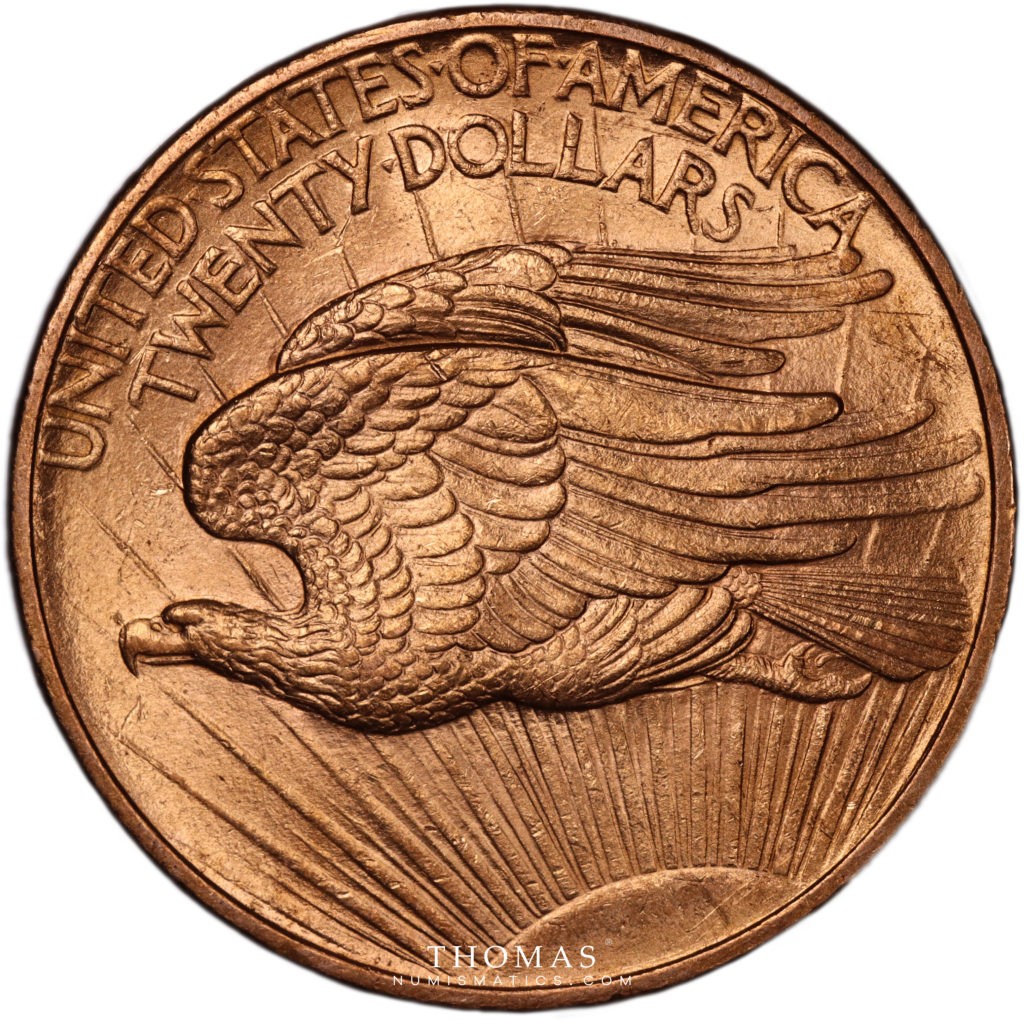
The specificity of 1933
Why is dollar 20 1933 so specific and prestigious?
The Great Depression of that year signaled the end of production for the $20 gold coin and all American gold coins.
Following the Great Depression of 1929, President Franklin Roosevelt took drastic measures to limit private hoarding of gold. As part of the New Deal policy, the minting of gold coins was halted, and Franklin Roosevelt ordered the withdrawal of all coins from circulation.
However, it is estimated that around 445,500 Double Eagles were minted before President Roosevelt issued Executive Order 6102 on April 5, 1933.
They were all melted down. Well, almost all of them… A few pieces reappeared as time went by and were confiscated, but some still escaped melting.
They are very rare. That’s why the 1933 $20 coin is so prestigious in the world of numismatics.
The famous 1933 Double Eagle
Two of these pieces are held in the American collection at the Smithsonian’s national museum Institution.
Another was bought by King Farouk of Egypt in 1944, with an import certificate, which he kept until his downfall. This 1933 Double Eagle then disappeared for almost 40 years, until the mid-1990s, when it reappeared in the hands of a New York numismatist. Shoe designer Stuart Weitzman bought it for $7.59 million in 2002. After a long and bitter legal battle, the US Mint finally issued a certificate of authenticity.
In June 2021, Weitzman sold it for 16.2 million euros at a Sotheby’s auction. The owner wished to remain anonymous.
Today, most known Double Eagles have been returned to the U.S. government. It’s likely that other examples exist, but they will never see the light of day and be sold publicly. But there are plenty of other treasures to be found in our online shop.
Source :
Barnebys


